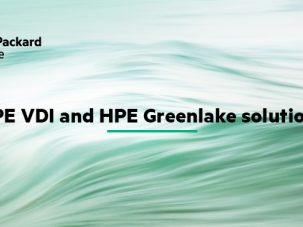The cloud has fundamentally impacted how computing resources are provisioned and managed, however the nature of computing itself has not changed. We see similar workloads in the cloud as we do in on-premise computing environments. Thus, it’s important for organisations to understand how to optimise their workloads to maximise the value of their hybrid cloud investments.
While not all organisations may be focused on their multicloud workloads, the principles explored below can be leveraged for any business, regardless of where they are in their cloud journey. It’s important for all types of businesses to consider their edge to cloud posture.
Businesses can better understand their hybrid infrastructure requirements through workload evaluation. Compute, storage, networking, and memory are all standard components of computing workloads. Any of these four components are present in each application, but they are not always balanced in the same way.
Modernisation of the edge-to-cloud IT estate can unlock the promise of digital transformation. HPE enables new business possibilities by delivering intelligent, workload-optimised computing systems and solutions that improve agility, operational efficiency, and the speed of innovation.
One way to manage computing resources is to automate complex tasks, increasing the speed and simplicity from edge-to-cloud. HPE provides high-performance solutions that scale up or out, on-premises or in the cloud, with purpose-built infrastructure and software that accelerates HPC, AI, and analytics adoption and scaling. Below we explore HPE's workload-optimised compute solutions as used at the edge and in high-performance computing, like Exascale which are even used for space missions.
Edge workloads in the age of IoT
With billions of IoT devices deployed worldwide, businesses are consistently flooded with data.
In this customer-centric era, no firm can afford latency, security, or connectivity issues when transporting large amounts of data between data centres and remote locations. Many of these issues can be avoided by locating smaller data centres, IT infrastructure, computational, storage or networking capabilities near the billions of IoT devices at the edge of the network. This approach also can save on operational costs and is also suitable for smaller organisations.
Unexpected interruptions can be not only expensive but also dangerous. A hybrid infrastructure that incorporates power, cooling, environmental monitoring, and security is critical for cost savings, uptime, and availability. Safeguarding that infrastructure requires remote monitoring and management solutions which simplify the deployment and maintenance of distributed assets.
HPE is committed to assisting businesses across various sectors in exploring and using edge computing capabilities. HPE technologies enable a variety of edge scenarios, from delivering a seamless healthcare experience to building a quicker, more intelligent packaging plant, to assisting businesses in transitioning from old infrastructure, to one that is ready to give data-driven insights.
HPE's edge computing portfolio includes Aruba ESP and HPE Edgeline.
Aruba ESP
Aruba ESP (Edge Services Platform) is the industry’s original AI-powered, cloud-native architecture designed to automate, unify, and protect the Edge. Aruba ESP offers the largest telemetry-based data lake for AIOps, as well as Dynamic Segmentation and policy enforcement rules to secure new devices. It facilitates cloud-managed orchestration across wired, wireless, and WAN, providing ultimate flexibility — in the cloud, on-premises, or consumed as a service.
HPE Edgeline
HPE Edgeline offers converged OT (Operations Technology) and enterprise-class IT in a single, ruggedised system that implements data centre-level compute and management technology at the edge. The system integrates key open standards-based OT data acquisition and control technologies directly into the enterprise IT system responsible for running the analytics. This delivers fast, simple and secure convergence between the necessary OT hardware and software components. The convergence of OT and IT capabilities into a single HPE Edgeline system greatly reduces the latency between acquiring data, analysing it and acting on it, while at the same time saving space, weight and power (SWaP).
Exascale computing
Exascale computing heralds a new age of supercomputer development. Exascale computing refers to computer systems that are capable of doing at least one exaflop or one billion, billion computations per second. That is 50 times faster than the fastest supercomputers now in use and a thousandfold faster than the first petascale computer.
Present systems capable of operating at petascale, such as HPE's Cray supercomputer, enable businesses to do previously impossible tasks.
Historically linked with universities and large government laboratories, supercomputers have long been used to perform commercial applications that extend well beyond fundamental science. For example, oil exploration, banking, tailored content distribution, and online advertising use high-performance computing (HPC) systems to manage massive workloads that need real-time service delivery.
What makes the exascale era unique and exciting is the arrival of artificial intelligence. As companies expand their use of AI, they analyse vast volumes of data to teach the systems how to function. Combining high-performance computing and artificial intelligence enables enterprises to train more extensive, intelligent, and accurate models.
Exascale computing enables scientists to achieve new levels of capability by accelerating their work. By enabling scientists to construct models faster than previously possible, exascale has the potential to alter how research is conducted.
Increased computation power translates into more innovative solutions in a variety of sectors. For example, exascale supercomputers can significantly cut transaction latencies in the financial sector, giving traders an edge. In manufacturing, high-powered systems can determine the resistance of a new 3D print material to daily temperature and pressure fluctuations.
The design issues grow more difficult with each successive generation of high-performance computing. High-performance computing is gaining traction, and the interest in AI-driven applications is ever-growing.
Accelerated space exploration with the Spaceborne Computer
Manned journeys into our solar system need advanced computing capabilities, made possible by exascale computing, to minimise communication delays and guarantee the astronauts' safety. HPE and NASA collaborated to further these missions by launching a supercomputer on a SpaceX CRS-12 rocket bound for the International Space Station (ISS).
HPE launched the Spaceborne Computer (SBC) in August 2017 as part of a year-long experiment with NASA to see how well a supercomputer performs in the harsh environment of orbit. The Spaceborne Computer had a busy first six months, passing multiple benchmarking tests and remaining operational despite an emergency shutdown owing to a false fire alarm.
By November 2018, astronauts onboard the International Space Station had direct access to the Spaceborne Computer's super computing capabilities until its return to Earth in June 2019. The Spaceborne Computer completed a one-year mission on the International Space Station, paving the way for humanity's future journeys to the Moon, Mars, and beyond.
The SBC-2 was released in May 2021, building on the success of the SBC-1. This second generation of the Spaceborne Computer, composed of the HPE Edgeline Converged Edge system and the HPE ProLiant server, doubles the processing capability of its predecessor and adds artificial intelligence capabilities. As a result, NASA and ISS National Laboratory researchers may now employ Spaceborne Computer-2 for in-space data processing and analysis, enabling them to get faster findings and iterate experiments on the ISS.
HPE's intelligent compute foundation for hybrid cloud
HPE supports application and data agility throughout the enterprise—at the edge, in the cloud, and data centres—by reducing complexity and silos and enhancing speed and agility via the use of standardised tools, processes, and automation.
Cloud computing enables enhanced speed, agility, and cost savings—but achieving these advantages requires overcoming significant barriers such as data gravity, security, regulatory compliance, cost management, and the need for organisational change. HPE's hybrid cloud solutions use a proven methodology to aid organisations in overcoming cloud challenges and advancing digital transformation.
HPE delivers an intelligent computing foundation that addresses the challenges of non-cloud native apps and positions businesses to create a unified and modern cloud strategy.
HPE technologies provide unparalleled workload optimisation, automated security, and intelligent automation – all delivered as a service. HPE ProLiant computing solutions can help you revolutionise your IT operations by offering insights into your workloads' performance, deployment, and efficiency, enabling you to provide better outcomes faster.
The computing solutions take a holistic approach with built-in security, starting with the manufacturing supply chain and concluding with a secure, end-of-life decommissioning process that leverages the world's most secure servers.
HPE compute intelligence streamlines and automates management tasks, establishing the framework for a hybrid cloud architecture that is open and interoperable. HPE GreenLake, for example, allows enterprises to reach the performance necessary to handle compute-intensive applications while balancing performance, growth, and management. Pay-per-use options for on-premises computing assets enable businesses to align IT expenditures with actual use.
In Conclusion
Be it the edge of the network or the edge of the earth, HPE provides a computational base that adapts to various applications. HPE meets the growing need for forward-thinking, high-performance computing technology that can adapt to demanding workloads by building systems that provide you with maximum choice and flexibility.
HPE’s edge computing portfolio is purpose-built and enables a broad range of top bin processors and accelerator technologies for data-intensive applications, enabling you to maximise the value of your data and expedite time to market.
HPE provides on-premises or co-location HPC systems that include the cloud's flexibility, scalability, and utility-like consumption. Greater agility is achieved by pay-per-use pricing and pre-installed buffer capacity for provisioning as demand increases. As your IT partner, we can help you take advantage of HPE computing solutions.
While the possibilities of what can be achieved at the edge are virtually limitless, you don’t need to collaborate with NASA to leverage the advantages of compute from edge to cloud. Regardless of the size of your business, HPE’s technologies provide the ideal framework to achieve your business goals. Whether you’re just beginning your journey to the cloud, deploying devices at the edge or optimising your workloads, we, as your IT partner, can help you identify and implement the right HPE solutions for your business’s growth. Contact us today.





